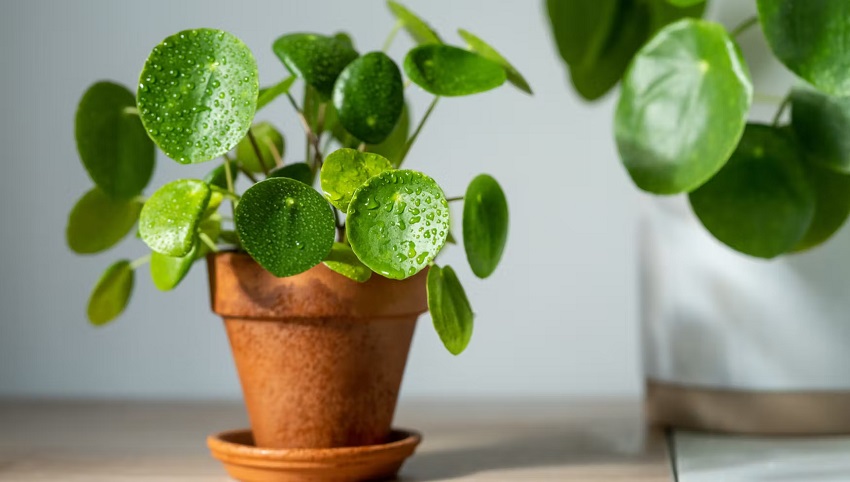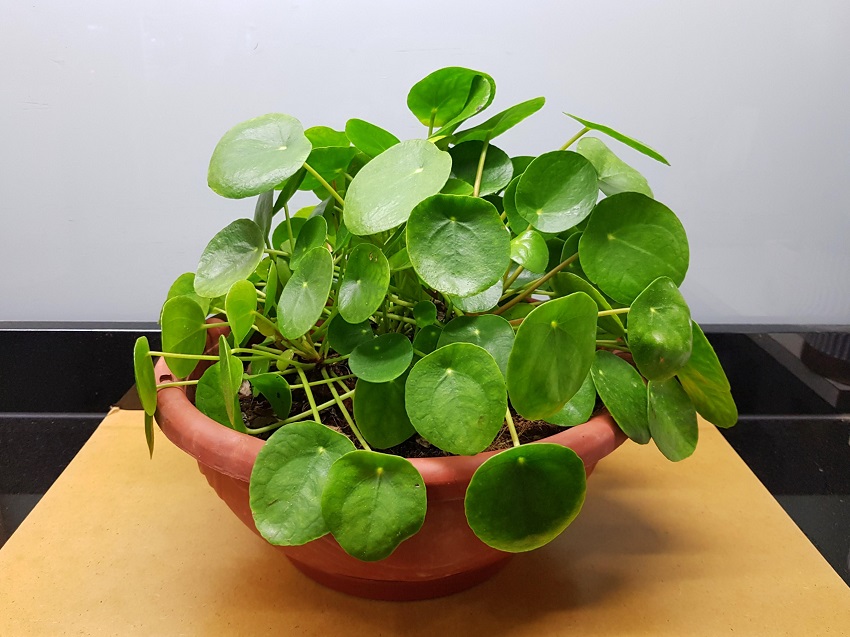
10 Jun Do Pilea Plants Like Big Pots?
Are you a proud plant parent of a Pilea plant? If so, you may have wondered whether your beloved Pilea would thrive in a larger pot. In this article, we’ll explore the topic of whether Pilea plants like big pots. We’ll delve into the benefits of using larger pots, discuss the potential drawbacks, and provide you with practical tips to ensure the well-being of your Pilea. So, let’s dig in!
Understanding Pilea Plants
Before we dive into the question of pot size, let’s briefly discuss Pilea plants. Pilea, also known as the Chinese Money Plant or Pancake Plant, is a popular houseplant appreciated for its vibrant green leaves and unique round shape. It originates from China and belongs to the Urticaceae family.
Pilea plants are relatively low-maintenance, making them a favorite among both novice and experienced gardeners. They prefer bright, indirect light and well-draining soil. Now, let’s explore whether they enjoy being housed in larger pots.
The Benefits of Big Pots for Pilea Plants
Using a larger pot for your Pilea plant offers several potential advantages. Here are some benefits that you should consider:
1. Enhanced Root Growth
When provided with ample space, leggy pilea plants can develop a robust root system. Larger pots allow the roots to spread and grow freely, providing better nutrient absorption and water retention. This can lead to healthier and more vigorous growth.
2. Increased Moisture Retention
Bigger pots generally have a greater capacity to retain moisture. This can be advantageous, especially if you have a busy schedule or tend to forget to water your plants regularly. The extra soil in larger pots can help maintain a more consistent level of moisture, reducing the risk of underwatering and allowing your Pilea to thrive.
3. Improved Stability
Larger pots provide a solid foundation for your Pilea plant. With more room for the roots to anchor themselves, your plant will have increased stability and be less prone to tipping over. This is particularly beneficial if you have a tall or top-heavy Pilea variety.
4. Longer Time Between Repotting
By opting for a bigger pot, you can extend the time between repotting sessions. Pilea plants typically require repotting every one to two years to provide fresh soil and room for growth. Choosing a larger pot initially can delay the need for repotting, giving your Pilea more time to establish itself and saving you the hassle of frequent potting.
Potential Drawbacks of Big Pots
While there are several advantages to using big pots for your Pilea plant, it’s important to consider the potential drawbacks as well. Here are a few factors to keep in mind:
1. Overwatering Risk
Larger pots have a higher soil volume, which means they can hold more water. This increased moisture capacity may pose a risk of overwatering if you’re not cautious. Pilea plants are susceptible to root rot caused by excessive moisture, so it’s essential to monitor the soil’s moisture levels and adjust your watering routine accordingly.
2. Soil Saturation
With a larger pot, it’s crucial to ensure that the soil is evenly moist throughout the container. Otherwise, the outer regions of the soil may remain wet while the center becomes dry. This can lead to uneven water distribution and potentially impact your Pilea’s overall health. Regularly check the soil moisture by inserting your finger about an inch deep into the soil to determine if it’s time to water.
3. Challenging Soil Drying
While larger pots retain moisture well, they may also take longer to dry out. This can be a concern if you live in a humid environment or tend to overwater your plants. Pilea plants prefer a well-draining soil, so it’s crucial to adjust your watering frequency accordingly to prevent waterlogged conditions that could harm the roots.
Practical Tips for Potting Pilea Plants
To ensure the optimal growth and well-being of your Pilea plant, here are some practical tips for potting:
1. Choose the Right Pot Size
When selecting a pot for your Pilea, aim for a size that provides enough space for the roots to grow without being excessively large. A pot that is 1 to 2 inches larger in diameter than the current one is usually sufficient.
2. Opt for Well-Draining Soil
Pilea plants thrive in soil that allows excess water to drain freely. Use a well-draining potting mix that consists of a combination of peat moss, perlite, and a small amount of sand. This will prevent waterlogging and promote healthy root development.
3. Water Wisely
Ensure you water your Pilea thoroughly but allow the soil to dry slightly between watering sessions. Stick your finger into the soil to gauge its moisture level. If it feels dry about an inch below the surface, it’s time to water. Remember to adjust your watering frequency based on the pot size and environmental conditions.
4. Monitor Growth
Regularly inspect your Pilea plant for signs of overcrowding, such as roots emerging from the drainage holes or stunted growth. If you notice these signs, it may be an indication that it’s time to consider repotting into a larger container.
In conclusion, Pilea plants can benefit from being placed in larger pots. The advantages include enhanced root growth, increased moisture retention, improved stability, and a longer interval between repotting. However, it’s important to be mindful of potential drawbacks such as overwatering and soil saturation. By following the practical tips provided, you can successfully pot your Pilea and create an environment where it can thrive and bring joy to your living space.


Sorry, the comment form is closed at this time.